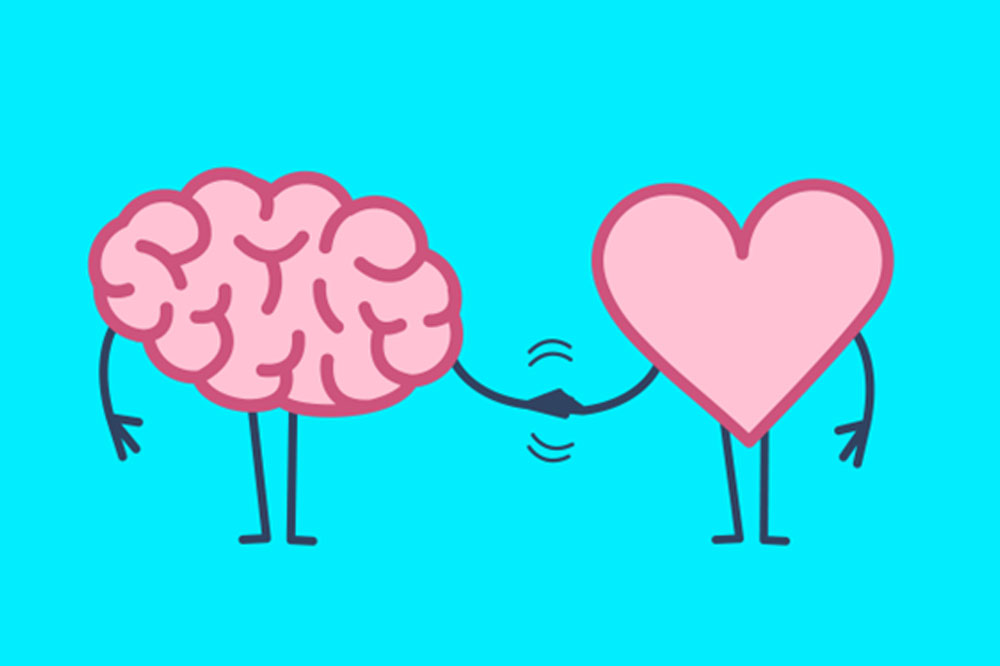Empathy, understanding the thoughts and feelings of the people around us, is one of the most important and most trying parts of being social creatures. I believe that human empathy is actually a skill that can be developed rather than a fixed trait.
Empathy is so important: it inspires us to help family members, friends, and strangers, it helps us see past differences and allows us to see others who are of a different race, generation or ideology from our own, without the lens of stereotyping, prejudice, or bias.
And it’s not just others who benefit from our empathy — we do too. Research indicates that people who experience empathy tend to be less stressed and depressed, more satisfied with their lives, happier in their relationships, and more successful at work.
We can distinguish between three types of empathy: cognitive empathy, emotional empathy, and empathic concern (compassion). To illustrate these types, imagine that you’re having lunch with a friend when they get a phone call. You don’t know who they’re talking to, but at some point, your friend starts to cry. As you see your friend break down, you might start to feel bad yourself, this is emotional empathy, sharing what someone else is going through. You also might try to work out what they’re feeling and why, and that’s what we’d call cognitive empathy. And if you’re a good friend, you probably care about what they’re going through and wish for them to feel better, and we’d call that empathic concern or compassion.
Of course, empathy is not always possible, nor is it always the wisest response: we do not owe anyone our empathy. If you find yourself unable to empathize with a person or people who actively seek to destroy or disparage the group you’re in, for example, it’s not a failure. Also, empathy can run counter to justice and can sometimes give us tunnel vision, in wanting to help some people over others, for example, the empathy you have for a good friend may convince you that they should be allowed to jump the line for a COVID vaccine ahead of someone who needs it more.
We can all cultivate empathy in the same way that we can try to take care of our bodies or of our mental health. We can think of building empathy as a way to take care of our social health. Here are five exercises to help build empathy:
Exercise #1: Strengthen your internal resources. For this exercise, think about something you’re struggling with and how it makes you feel. Then imagine a friend coming to you with that same problem and how you’d respond to them. Doing this can highlight the chasm between the kindness we give to the people in our lives and the kindness (or lack of) that we show ourselves. You’ll probably find a significant difference in how you’d treat your friend — most likely with patience, generosity, and forgiveness — versus how you’d react to yourself — perhaps with blame, harshness and self-criticism. Empathy must start at home, with ourselves; we can’t just keep giving emotionally until there’s nothing left. By building self-compassion, we are increasing our capacity for empathy.
Exercise #2: Feeling spent? Spend kindness on others. At some point in your day, especially when you’re stressed or feel like you don’t have any spare capacity, spend in some small way — whether it’s in time, energy, or money — on someone in your life. Send a text message of support to someone who’s having a hard time. When you’re out and about, pick up your partner’s favourite coffee. Carry an older neighbour’s groceries upstairs. Building empathy isn’t necessarily about donating half our salary to charity, it’s about the little things that we do each day. In an attempt to conserve energy for ourselves, we tend to turn inwards when under pressure. While it may seem counterintuitive, performing these tiny acts — especially at moments when we feel like we can’t — can be energizing and enlivening: when we give to others, we don’t end up depleting themselves.
Exercise #3: Disagree without debating. Have a conversation with someone you disagree with, but rather than debating or discussing the contentious issue, share your story of how you came to form your opinion and then listen to how they arrived at theirs. This is likely to be the most uncomfortable of the exercises, but it’s worth doing given our current social climate in which a person’s ideology can be equated with their personality (do not do this exercise with someone who harms or denigrates you or the group you belong to). The aim of doing this exercise is not to change the mind of the other, it’s to show us that it’s possible to disagree with them without disliking or seeing them as the enemy. Empathy does not mean condoning — but it can mean understanding.
Exercise #4: Use technology to connect, not just to click and comment. For this exercise, think of how you currently use your phone and rethink how you might use it differently. Try to be intentional about technology as a medium in which human connection can exist and which you can try to pursue that connection. Many of us pick up our phones only to look up an hour later to realize we’ve spent the time doing a whole lot of aimless scrolling and clicking and not much else. For a few days, do an internal audit each time you catch yourself looking up from your phone. Take notice of how you feel, what (if anything) you’ve gained, and what you’ve retained. By asking yourself basic questions — “What am I thinking? Is this what I want to be doing? What do I feel right now?” — you have the chance to look at its impact on you and your well-being. This exercise is not designed to build empathy itself but rather to help us bring kindness and humanity to the online platforms where we spend much of our time. When you can, try to use your digital interactions as a chance to better connect with others. This could mean having more real-time interactions and conversations. For example, instead of just leaving an emoji on a friend’s Instagram post, why not directly text or call them?
The more we can cultivate our own empathy, the more we’ll be contributing to an overall culture of kindness, and kindness is contagious — when others see it, they’re more likely to engage in it too.




